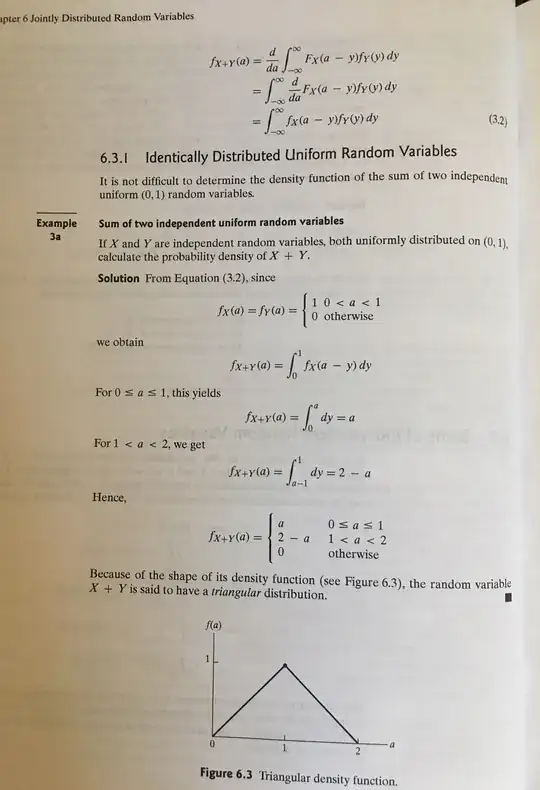I'm reading Ross' A First Course in Probability and I've hit a roadblock. I don't understand how the author goes from
$$f_{X+Y}(a)=\int_0^1f_{X}(a-y)dy$$
to $$f_{X+Y}(a)=\int_0^ady=a$$ for the interval $0\leq a\leq1$
and
$$f_{X+Y}(a)=\int_{a-1}^1dy=2-a$$ for the interval $1<a<2$.
This probably is a dumb question but I've stared at the book for 10 minutes and no avail. Help would be appreciated.
Asked
Active
Viewed 146 times
0
Matthew K
- 225
-
210 minutes is not too much to think about a (mathematical) problem. I would have thought much longer about it. – callculus42 May 08 '18 at 17:01
-
1The problem is leaving out $f_Y(y)$ from the integral. From $0<y<1$ and $0<a-y<1$ one has $0<y<a<1+y$. Now, since $X$ and $Y$ take values on $(0,1)$, $X+Y$ takes values on $(0,2)$, so $0<a<2$. For $0<a<1$, we have $0<y<a$, and for $1<a<2$, we have $a-1<y$ and so $a-1<y<1$. – Math1000 May 08 '18 at 17:05
-
Possible duplicate of Sum of two uniform random variables – NCh May 09 '18 at 03:52